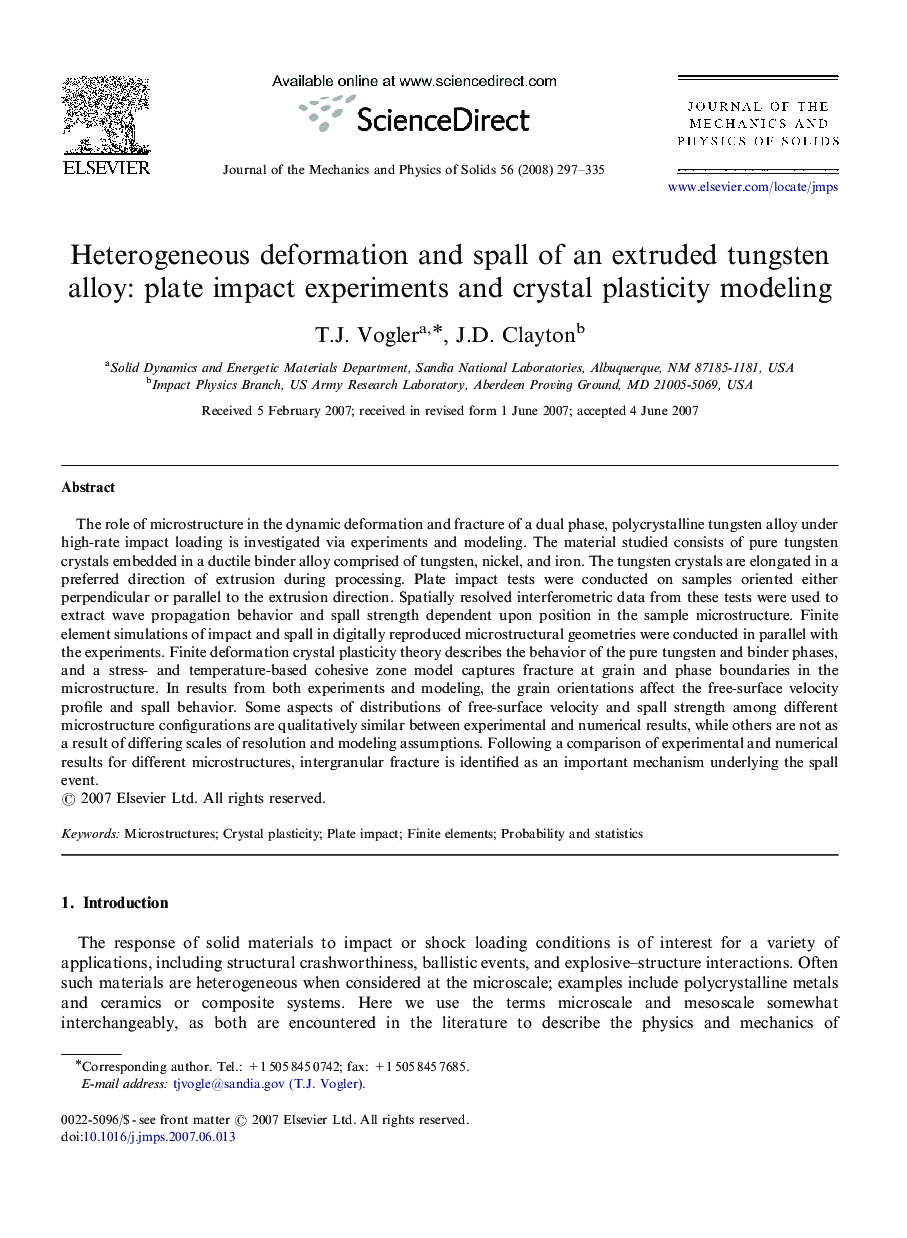| Article ID | Journal | Published Year | Pages | File Type |
|---|---|---|---|---|
| 800099 | Journal of the Mechanics and Physics of Solids | 2008 | 39 Pages |
The role of microstructure in the dynamic deformation and fracture of a dual phase, polycrystalline tungsten alloy under high-rate impact loading is investigated via experiments and modeling. The material studied consists of pure tungsten crystals embedded in a ductile binder alloy comprised of tungsten, nickel, and iron. The tungsten crystals are elongated in a preferred direction of extrusion during processing. Plate impact tests were conducted on samples oriented either perpendicular or parallel to the extrusion direction. Spatially resolved interferometric data from these tests were used to extract wave propagation behavior and spall strength dependent upon position in the sample microstructure. Finite element simulations of impact and spall in digitally reproduced microstructural geometries were conducted in parallel with the experiments. Finite deformation crystal plasticity theory describes the behavior of the pure tungsten and binder phases, and a stress- and temperature-based cohesive zone model captures fracture at grain and phase boundaries in the microstructure. In results from both experiments and modeling, the grain orientations affect the free-surface velocity profile and spall behavior. Some aspects of distributions of free-surface velocity and spall strength among different microstructure configurations are qualitatively similar between experimental and numerical results, while others are not as a result of differing scales of resolution and modeling assumptions. Following a comparison of experimental and numerical results for different microstructures, intergranular fracture is identified as an important mechanism underlying the spall event.
